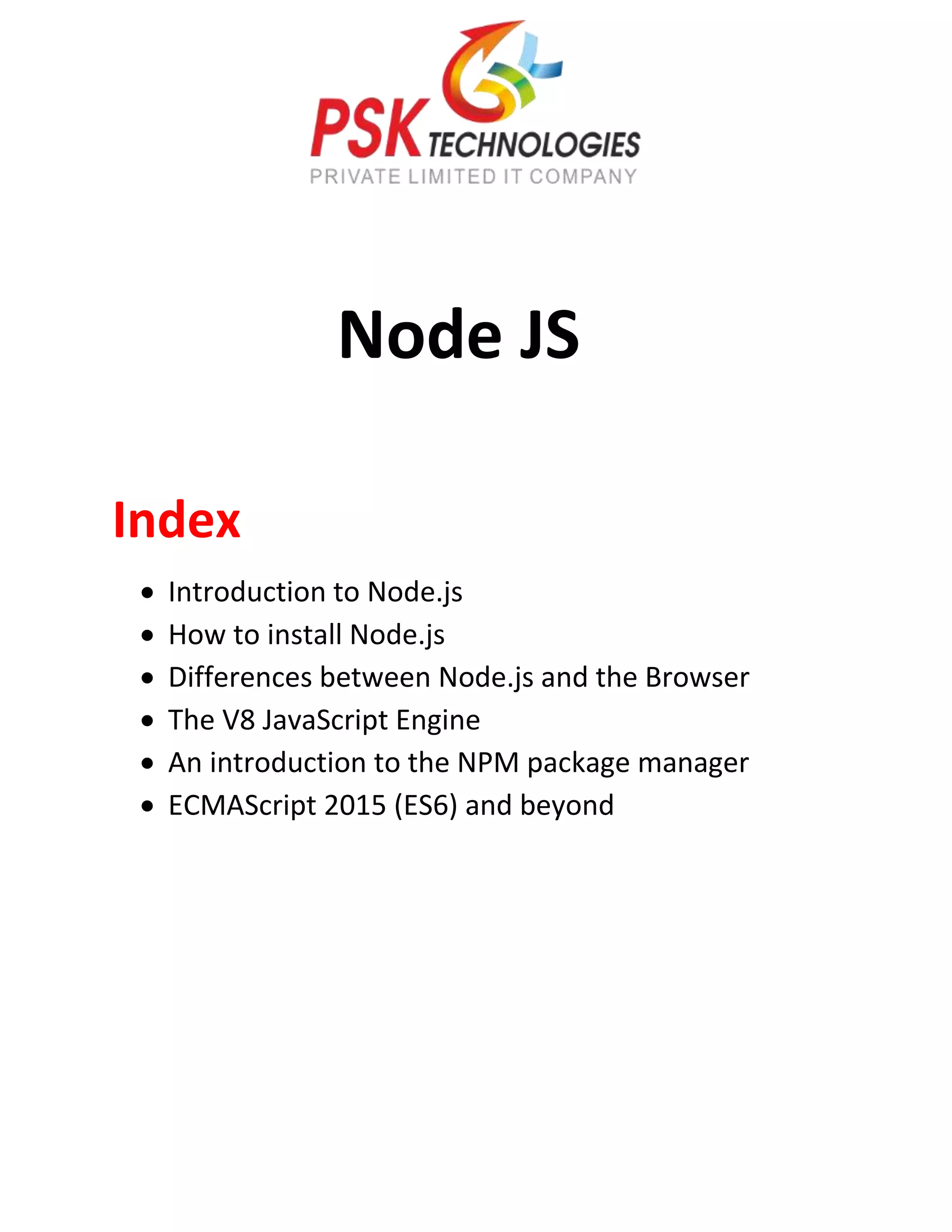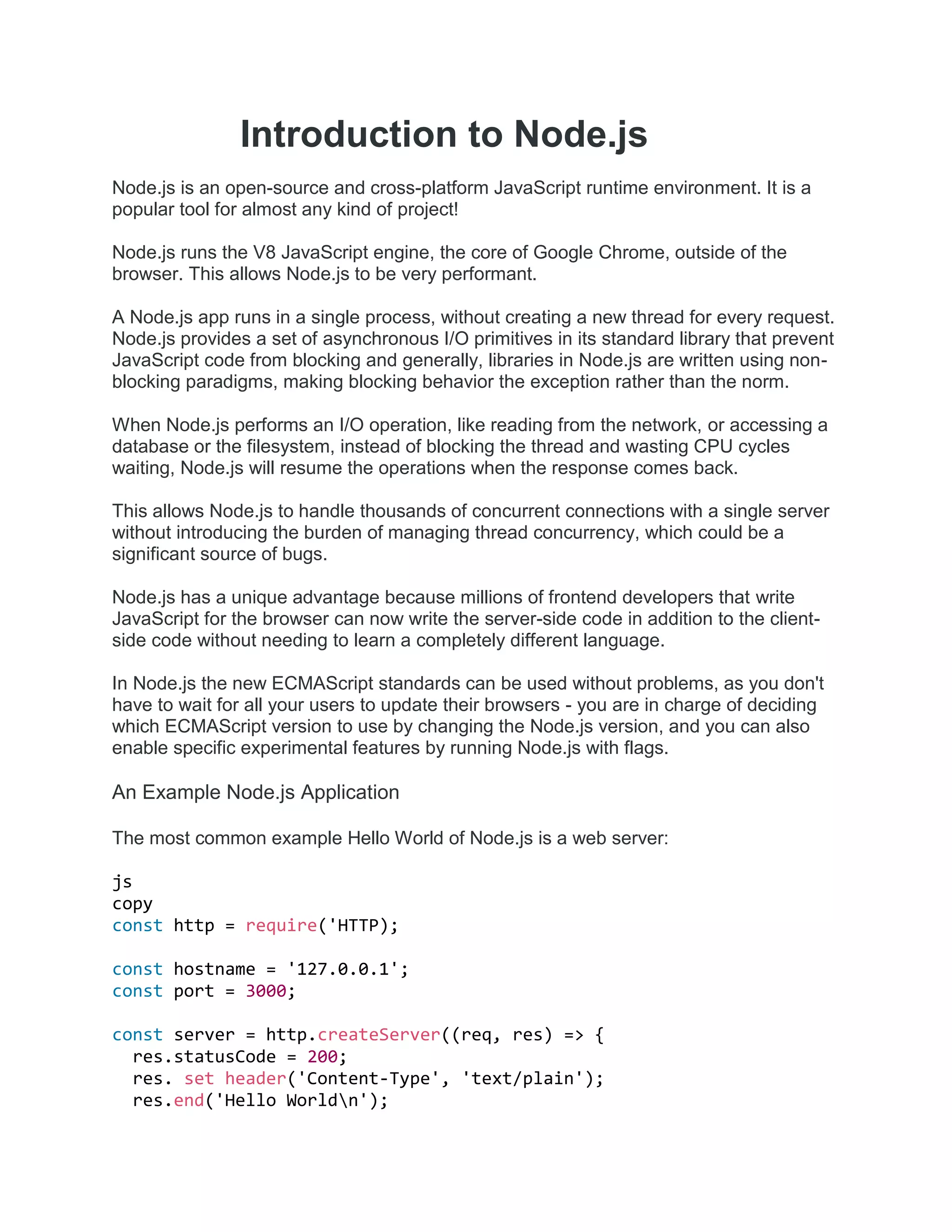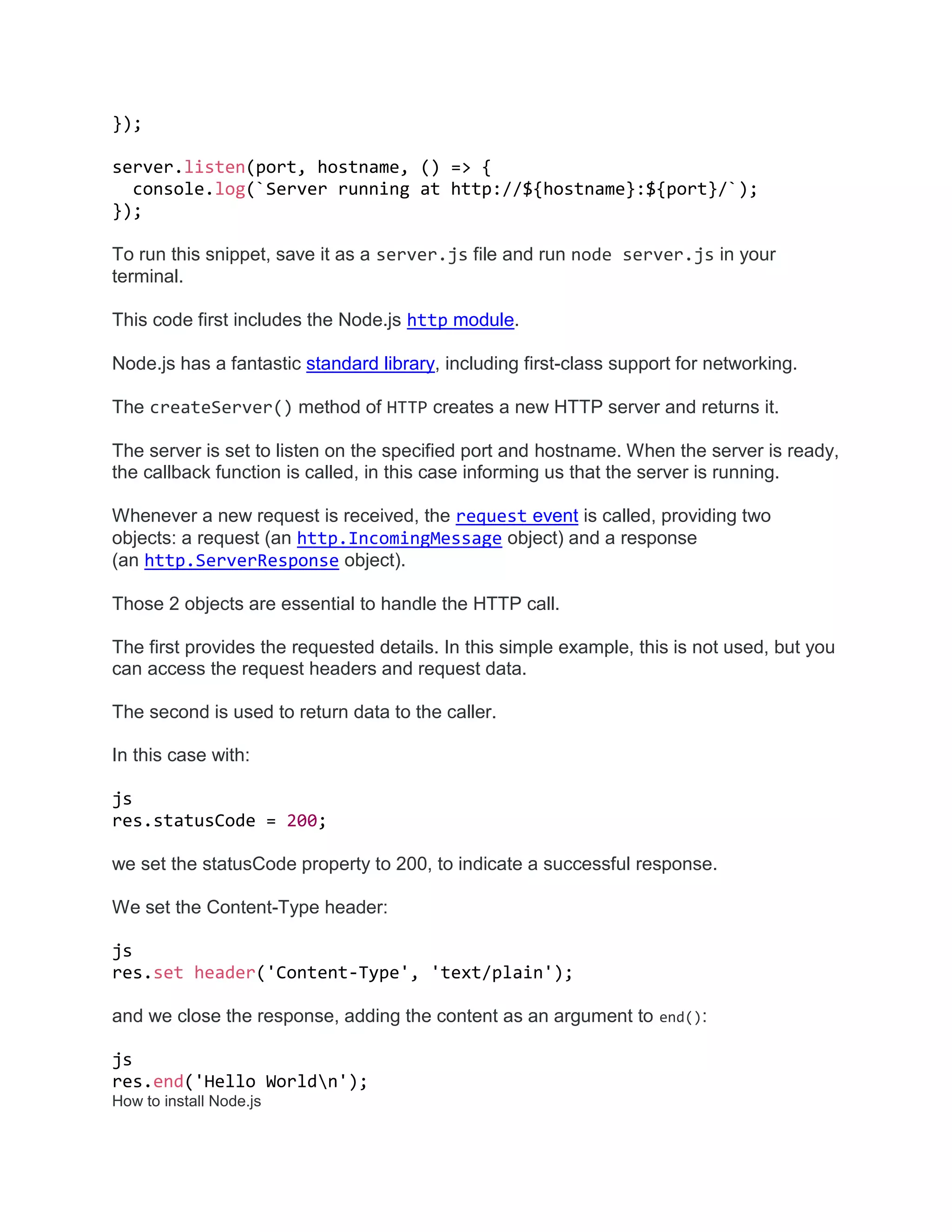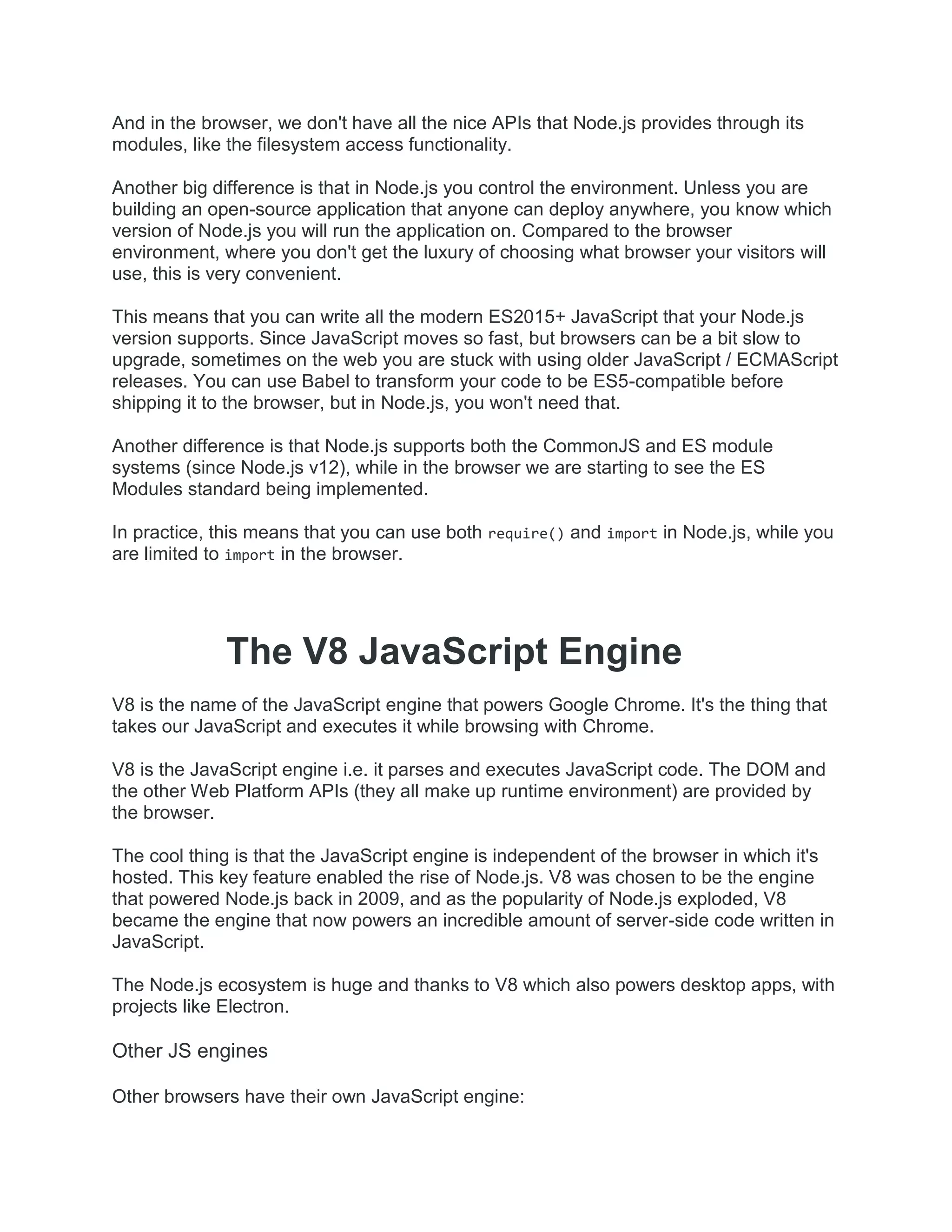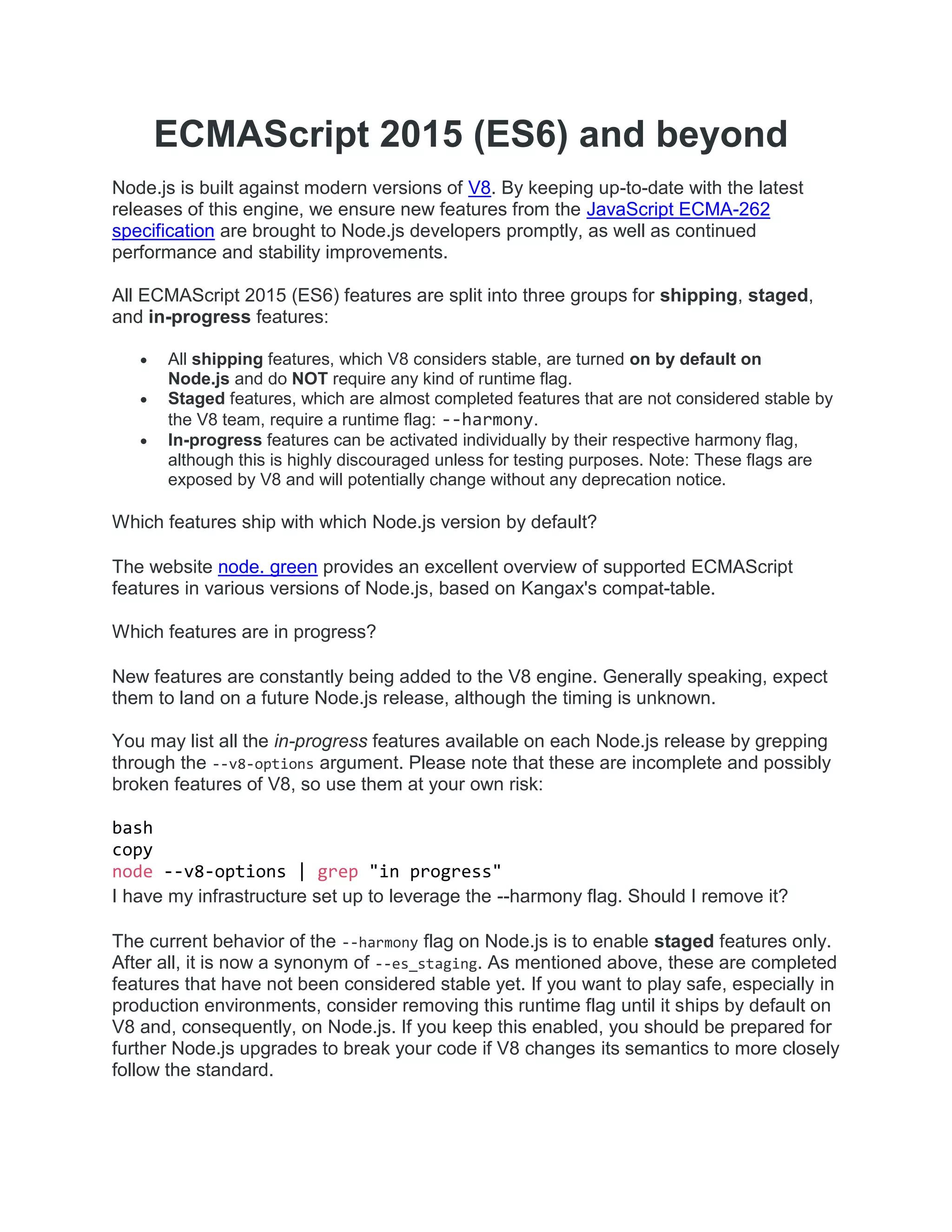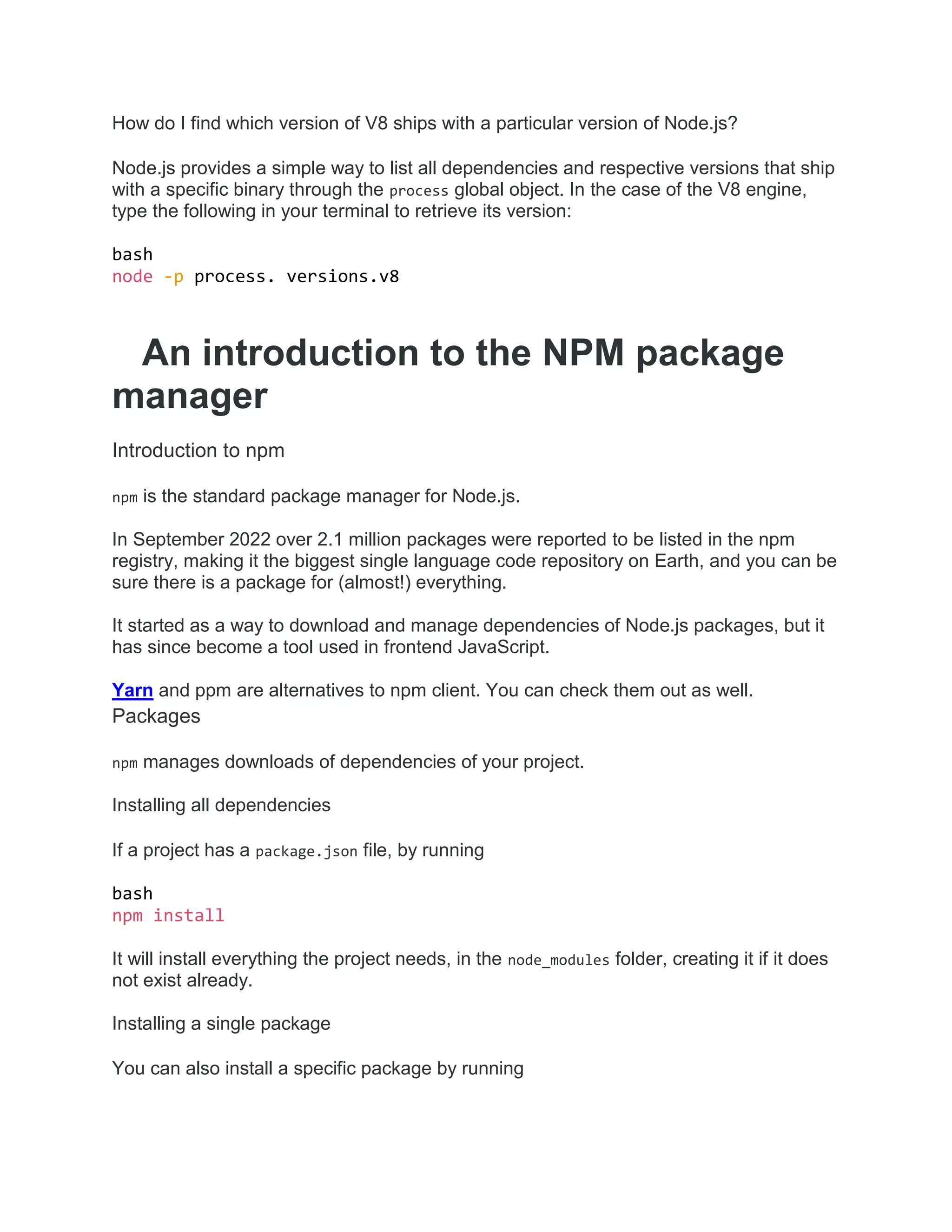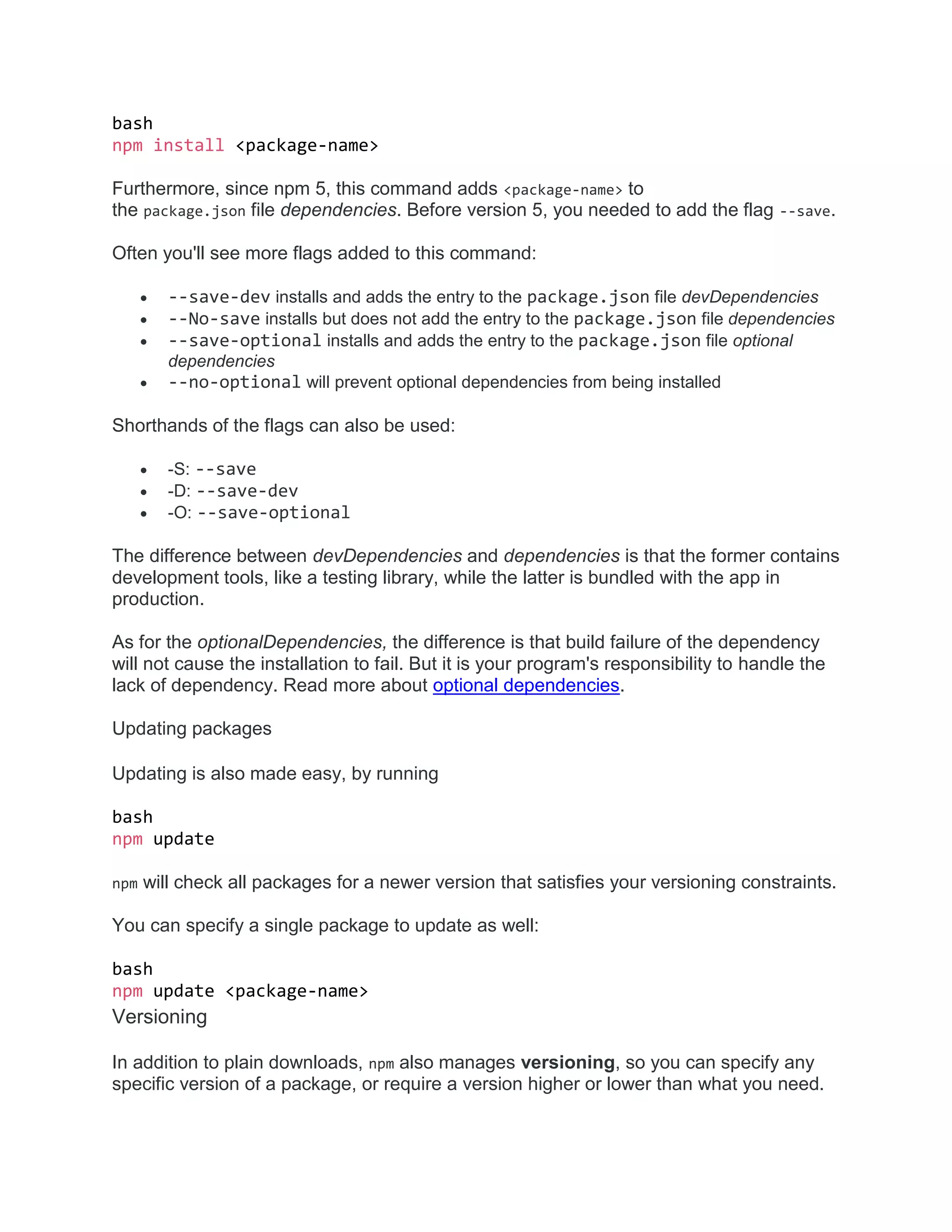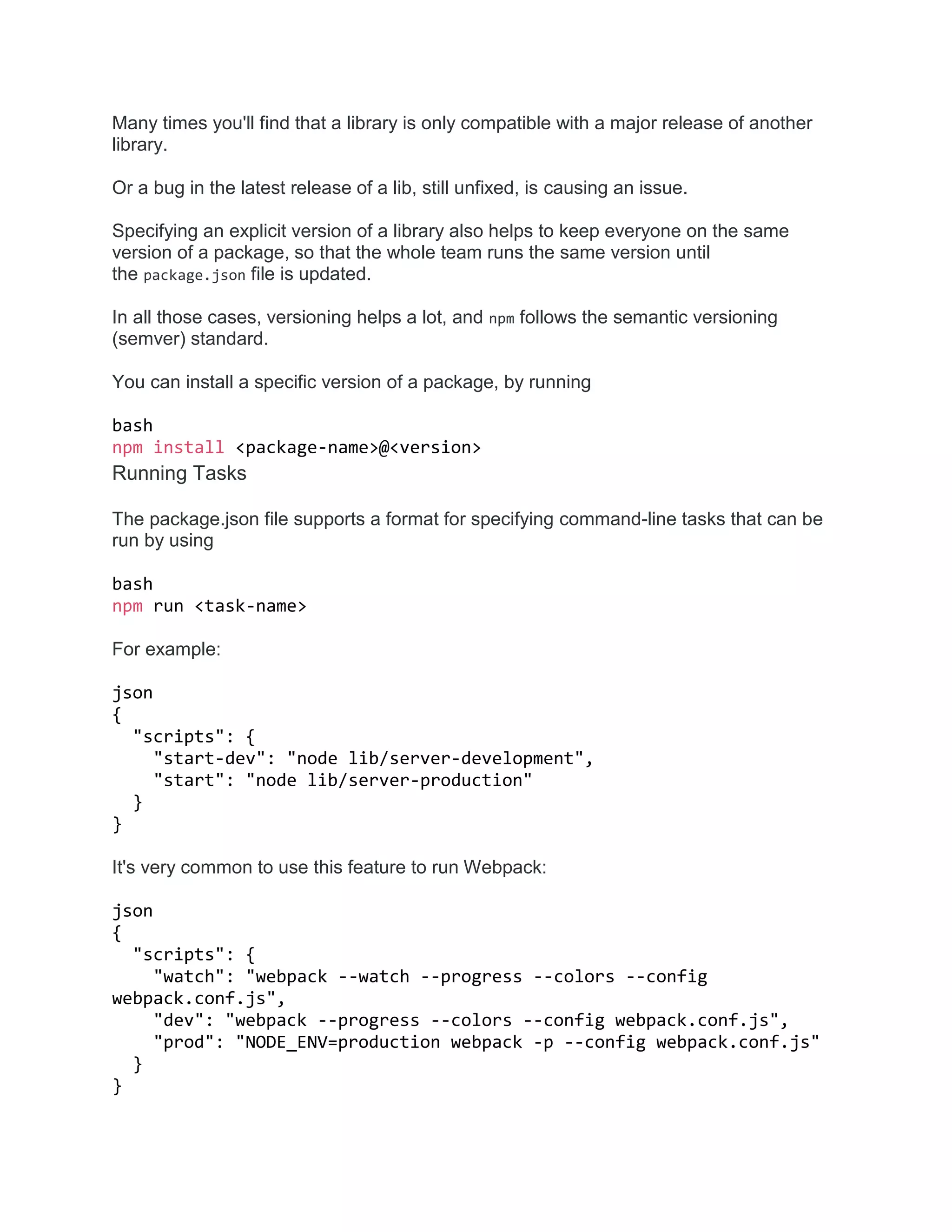Node.js is a JavaScript runtime built on Chrome's V8 engine that allows JavaScript to run on the server side. It is popular for building web servers and APIs due to its asynchronous and event-driven nature which allows non-blocking I/O operations. This allows Node.js to handle many concurrent connections efficiently using a single-threaded model. While both Node.js and browsers use JavaScript, they have different ecosystems - Node.js provides access to the filesystem and requires no DOM while browsers provide the DOM and other web APIs but have limited filesystem access. The V8 engine powers both Node.js and Chrome and is continuously optimized for performance. Node.js supports the latest ECMAScript standards without needing to wait for
